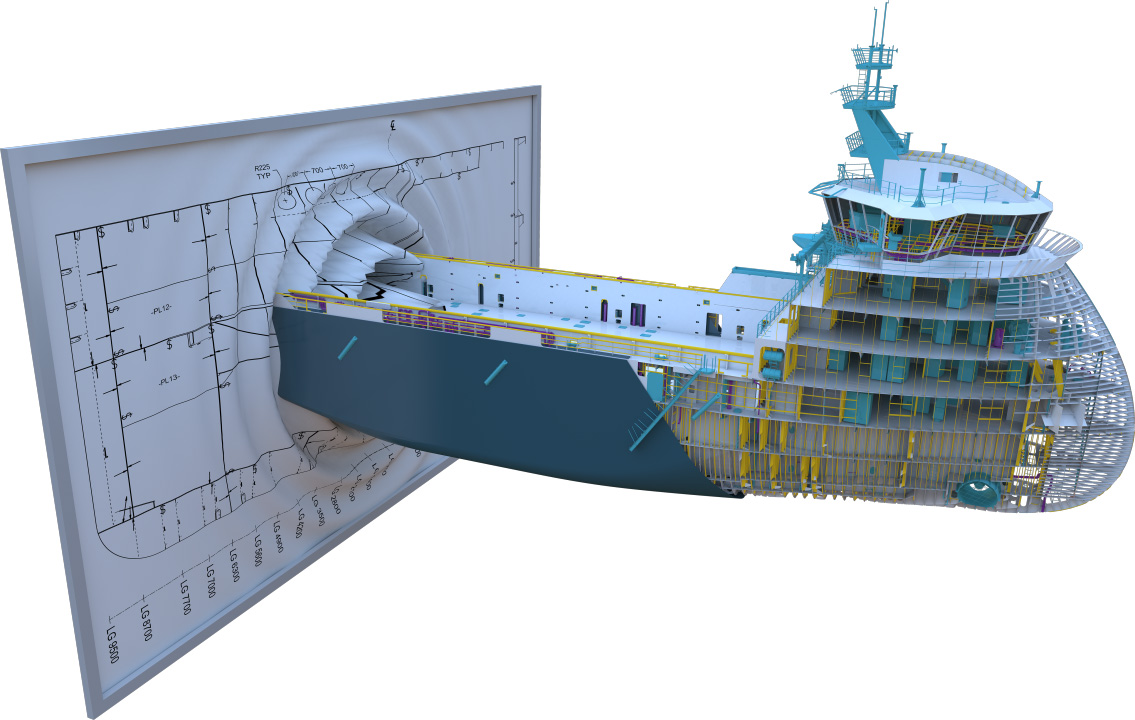Editor's Note: The article below was originally published on Linkedin. It discusses the realities of how remote workflows and cloud-based solutions are affecting the shipbuilding industry. We hope it provides a sense of how these topics will affect decisions workboat professionals will be making in the short and long term.
In the shipbuilding industry, it is my observation that most shipbuilding organizations are slow to adopt innovation and change implementation. This is because the art of shipbuilding has been around for centuries and, as with any industry, innovation takes place early in its lifecycle.
Since the shipbuilding industry is one of the oldest in the world, which began sometime between 1200 and 900 BC, the artform has had to change little since then. Other than the adoption of metal as a construction material in the mid-1800s, and the use of the steam engine, modern shipbuilding has stayed consistent in its processes.
Moreover, the knowledge of shipbuilding from tradesmen in a shipyard was typically passed down through family lineage or the local workforce that lived around the shipyards. It’s one reason why shipbuilders tend to be slow to adopt change from outside sources. As shipbuilders, we tend to “stay in our lane” and stick with the familiar. We tend to hold on to things we know and push back with phrases like "we’ve always done it like that." This condition has also had the effect of a new problem facing the modern shipbuilding industry. An aging workforce that has not adopted changes or passed shipbuilding knowledge to the next generation of workers. This has led to a brain drain in the shipbuilding industry and forced modernization from the bottom to the top. The all too dreaded word “change” raises questions the industry must face.
The challenges being faced by most of the industry now are how to adopt change and switch to a digital environment but continue to provide stakeholders information quickly, efficiently, and as accurately as possible. Crucially, that information must be provided with the least disruption to workflows and in the most cost-effective way. Every stakeholder in an organization requires certain information, provided at certain times and in a certain format that allows the cogs of the organization to continue to turn. This can be a nightmare if that information comes from multiple sources, in multiple departments, and in multiple formats. Now mix in the need to manage a model, make changes to that model, the requirements of multiple follow-on projects, and the changes associated with each of those models. Quite the conundrum if you are still using a non-digital workflow.
Today’s high-tech industries are shifting towards a purer digital environment, with remote workflows and cloud-based solutions. The shipbuilding industry, although begrudgingly, is trying to follow suit. With the advent of MRP, ERP, and PLM systems, the data is now at your fingertips. Connecting shipbuilding CAD tools to these enterprise solutions is a must in the race to a true digital twin. This digital twin can now become the “source of truth” for an organization and a true shift to a “data-centric workflow.” With that, shifting to adata-centric workflow forces an organization to answer other serious questions they would rather avoid. Things like: Do I have the right workforce for this type of shift? Do I need to add infrastructure that will help me make these changes? Will this shift give us a return on investment?
Once the shipbuilding organization shifts to a data-centric workflow they can focus on efficiencies that will streamline their business. The digital model is now the source of truth for the entire organization. Two things become evident in a shift to this workflow. First, the design phase becomes a central focus, and designers need the ability to use multiple design tools that allow the accurate addition of information to the model. Second, the design must become as detailed as possible so all stakeholders can access information from the model and trust that it is accurate and up to date. This in and of itself can cause a ripple effect, forcing departments and individuals to learn new workflows and software, as well as forcing the integration of this new infrastructure to adata-centric workflow. Now the shipyard’s PLM, ERP, MRP, and legacy systems need to speak the same language, and all must have access to the digital model. Everyone within the shipyard must buy into adata-centric workflow as well. Engineering, planning, production, procurement, as well as owner/operators become key stakeholders within the workflow. The data flow of information now will begin to form a shipbuilding digital thread, which can follow the ship throughout its lifecycle. This digital thread can begin at the design phase, on to the manufacturing phase, and reach into the maintenance phase – becoming a true digital twin.
A shift to adata-centric workflow in a small organization, which can be a bit flexible in implementation, can take a slower approach and implement a shift slowly in several phases. However, a large organization can face cataclysmic interruption when implementing a shift to adata-centric workflow. When planning a shift in a large organization, there is little time to waste before a go-live event. Owners, major stakeholders, and management need to know ahead of time that a shift to adata-centric workflow will give their organization a return on its investment and is worth the risk of up-ending current workflows and data flows. The stakes can be huge either way for both a large or small organization and can raise questions for each when contemplating a shift to adata-centric workflow. What toolset will work best for my organization? What is the cost of the implementation? How will I maintain this environment? Is what I adopt going to be scalable to my organization? I’m sure there are many more that can come to mind.
Any shift to a data-centric workflow can be a major undertaking for any industry, but more so for one reluctant to change.
 Darren Guillory is a technical solutions specialist with SSI USA. Darren deals directly with clients and potential clients, to review their software participation and progress, and to offer technical solutions, recommendations and best practices for client requirements.
Darren Guillory is a technical solutions specialist with SSI USA. Darren deals directly with clients and potential clients, to review their software participation and progress, and to offer technical solutions, recommendations and best practices for client requirements.
Guillory has spent nearly two decades in the commercial shipbuilding industry (LEEVAC Shipyards). As an engineering designer he has utilized the ShipConstructor suite of shipbuilding tools.



